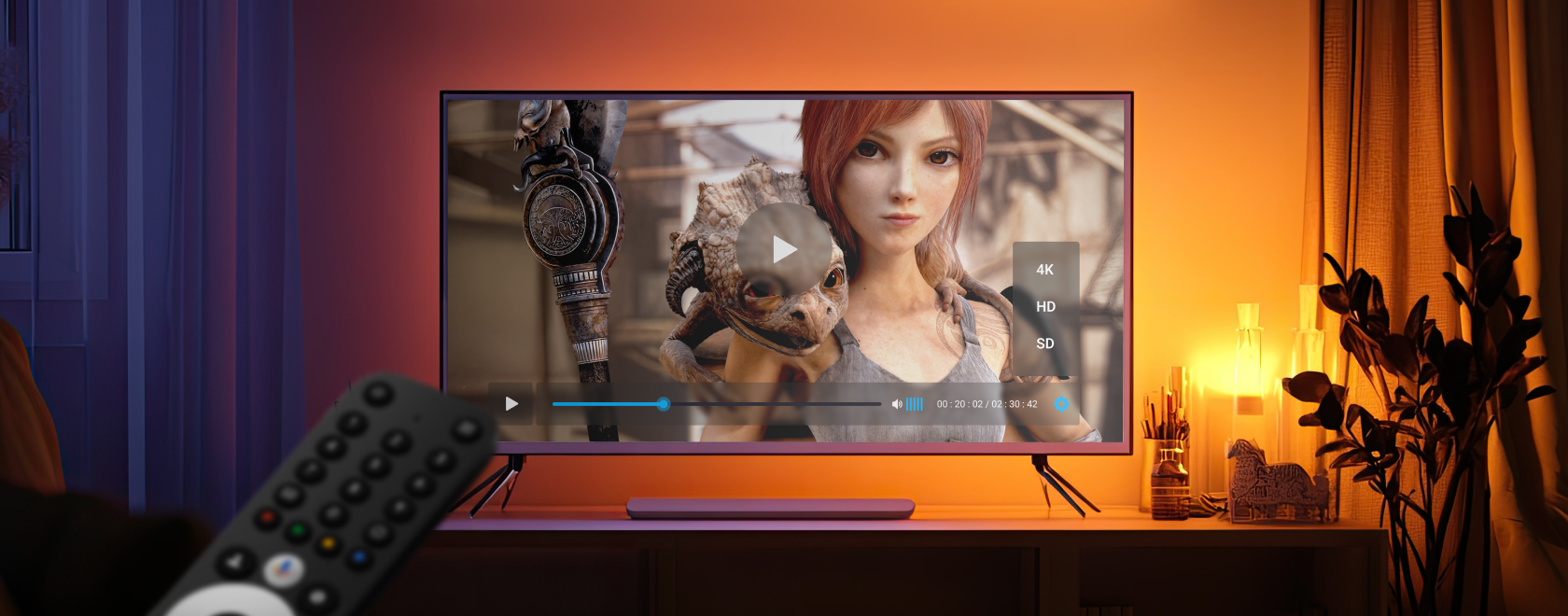In the world of streaming, viewer expectations are growing rapidly. People no longer tolerate long buffering times or poor-quality video, especially when enjoying live television or on-demand content through IPTV. At the same time, internet connections remain variable: Wi-Fi interference, network congestion, or unstable mobile data can impact streaming quality. This is where the concept of dynamic bitrate becomes a game-changer. For anyone using IPTV set-top boxes or media players, understanding how dynamic bitrate works—and why it matters—can significantly enhance your viewing experience.
What Is Dynamic Bitrate and Why Does It Matter?
Dynamic bitrate, often referred to as Adaptive Bitrate Streaming (ABR), is a technology that adjusts the quality of a video stream in real-time based on your current network conditions. Unlike static bitrate, where a video is delivered at a fixed quality regardless of bandwidth, dynamic bitrate allows the system to switch between multiple quality levels.
Imagine you start watching a live sports event on your IPTV device. Initially, your connection is strong, so the stream delivers at Full HD or even 4K quality. Suddenly, several devices in your home begin downloading large files, reducing available bandwidth. Without dynamic bitrate, you’d experience buffering or even a complete stream interruption. With dynamic bitrate, however, the system automatically drops the resolution to maintain smooth playback. When bandwidth improves, the stream seamlessly returns to a higher quality.
This process happens in milliseconds and is virtually invisible to the viewer, making it the backbone of modern IPTV and OTT services.
The Role of Playlists in Adaptive Streaming
Dynamic bitrate relies on special playlists, typically in HLS (HTTP Live Streaming) or MPEG-DASH format. These playlists are more than simple lists of video files—they contain multiple versions of the same video at different bitrates and resolutions. When your IPTV player starts a stream, it doesn’t just pick one file; it chooses from this adaptive playlist based on current conditions.
For example, an HLS playlist might include streams encoded at 240p, 480p, 720p, and 1080p. Your player continuously monitors network performance and switches between these streams without stopping playback. This makes dynamic bitrate especially important for live content, where buffering can ruin the experience, as well as for users with fluctuating internet speeds.
By leveraging these adaptive playlists, streaming providers can deliver a consistent experience without forcing viewers to choose between high quality and stability.
Why It’s a Win-Win for Viewers and Providers
Dynamic bitrate doesn’t just improve user satisfaction—it also optimizes resource usage for providers. High-definition video requires significant bandwidth, which can strain both the user’s network and the provider’s servers. By adjusting quality intelligently, dynamic bitrate reduces unnecessary data transfer during periods of congestion, which saves costs on bandwidth and CDN (Content Delivery Network) usage.
For viewers, the benefits are clear: fewer interruptions, smooth playback, and no need for manual quality adjustments. This is particularly valuable when watching IPTV on large screens, where abrupt buffering can be more frustrating than a slight temporary drop in resolution.
How Modern IPTV Devices Handle Dynamic Bitrate
Today’s IPTV set-top boxes and media players are designed with adaptive streaming in mind. They come equipped with software that supports HLS and MPEG-DASH protocols, enabling them to read adaptive playlists and adjust streams in real-time.
Some advanced devices even allow users to set preferences, such as prioritizing picture quality over buffering or limiting maximum resolution to save on data when using mobile hotspots. These settings offer an extra layer of control while keeping the core benefit of automatic adaptation intact.
The hardware capabilities of IPTV devices also play a role. Faster processors and optimized video decoders ensure that switching between different stream qualities happens smoothly without artifacts or playback delays. As a result, dynamic bitrate isn’t just a software feature—it’s an integrated part of a robust streaming ecosystem.
Why Dynamic Bitrate Is the Future of IPTV
As streaming continues to dominate home entertainment, the demand for seamless playback will only grow. Static streaming models are becoming obsolete because they cannot cope with the unpredictability of real-world networks.
Dynamic bitrate addresses this challenge by turning adaptability into a standard, ensuring viewers enjoy stable streams without compromise.
For anyone investing in an IPTV solution, whether as a service provider or an end-user, understanding the role of dynamic bitrate is crucial. It is no longer a premium feature—it is a necessity. And the devices that support it are the ones delivering the future of home entertainment today.
Dynamic bitrate technology represents a perfect balance between quality and reliability. By leveraging adaptive playlists and intelligent stream switching, it eliminates the long-standing trade-off between video quality and smooth playback. For IPTV users, this means uninterrupted viewing, even under fluctuating network conditions. For providers, it means efficiency and scalability. In an era where streaming quality defines user loyalty, dynamic bitrate is not just an advantage—it’s the standard for modern entertainment.
